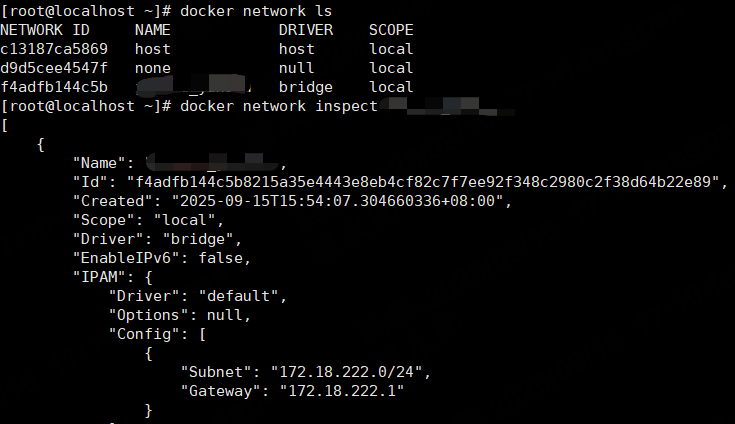docker 容器网络接口映射
docker 默认 bridge
排查容器网络问题笔记
怎样根据容器名称找到接口
方法一:
ip addr | grep -A 1 "^$(docker exec <容器名称或ID> cat /sys/class/net/eth0/iflink):"
方案2
#!/bin/bash get_veth_by_container() { cname="$1" if [ -z "$cname" ]; then echo "用法: $0 <容器名>" return 1 fi # 获取容器 PID pid=$(docker inspect -f '{{.State.Pid}}' "$cname" 2>/dev/null) if [ -z "$pid" ]; then echo "容器 $cname 不存在或未运行" return 1 fi # 从容器 eth0 找到宿主机 ifindex ifindex=$(nsenter -t $pid -n ip link show eth0 2>/dev/null | grep -o 'if[0-9]\+' | sed 's/if//') if [ -z "$ifindex" ]; then echo "无法找到容器 $cname 的 eth0" return 1 fi # 从宿主机查对应 veth 名称 veth=$(ip link | awk -v idx="$ifindex" -F: '$1 ~ idx {print $2}' | awk '{print $1}') if [ -n "$veth" ]; then echo "$veth" else echo "未找到对应的 veth 接口" return 1 fi } # 示例:调用 # get_veth_by_container my-nps
方案3:
#!/bin/bash # --- # A script to find the host-side virtual ethernet (veth) interface # for a given Docker container using the ethtool method. # --- # Set color for output GREEN='\033[0;32m' RED='\033[0;31m' NC='\033[0m' # No Color # 1. Check for input argument (container name) if [ -z "$1" ]; then echo -e "${RED}Error: Please provide a container name or ID.${NC}" echo "Usage: $0 <container_name_or_id>" exit 1 fi CONTAINER_NAME="$1" # 2. Check if ethtool is installed on the host if ! command -v ethtool &> /dev/null; then echo -e "${RED}Error: 'ethtool' is not installed. Please install it to use this script.${NC}" echo "On Debian/Ubuntu: sudo apt-get update && sudo apt-get install ethtool" echo "On CentOS/RHEL: sudo yum install ethtool" exit 1 fi # 3. Get the Container's PID echo "Inspecting container '$CONTAINER_NAME'..." PID=$(docker inspect -f '{{.State.Pid}}' "$CONTAINER_NAME" 2>/dev/null) if [ -z "$PID" ] || [ "$PID" -eq 0 ]; then echo -e "${RED}Error: Could not find a running container with name or ID '$CONTAINER_NAME'.${NC}" exit 1 fi echo "Found Container PID: $PID" # 4. Use nsenter to run ethtool inside the container's network namespace echo "Searching for peer_ifindex inside the container..." PEER_INDEX_LINE=$(nsenter -t "$PID" -n ethtool -S eth0 2>/dev/null | grep 'peer_ifindex') if [ -z "$PEER_INDEX_LINE" ]; then echo -e "${RED}Error: Could not determine peer_ifindex. The container might not have an 'eth0' interface or ethtool failed inside the namespace.${NC}" exit 1 fi # 5. Extract the peer_ifindex number from the output line PEER_INDEX=$(echo "$PEER_INDEX_LINE" | awk '{print $2}') echo "Found peer_ifindex: $PEER_INDEX" # 6. Find the interface on the host with that index HOST_INTERFACE_LINE=$(ip -o link | grep "^${PEER_INDEX}:") if [ -z "$HOST_INTERFACE_LINE" ]; then echo -e "${RED}Error: Could not find a host interface with index '$PEER_INDEX'.${NC}" exit 1 fi # 7. Extract the interface name and print the result # The name is the second field, and we remove anything after the '@' symbol. HOST_INTERFACE=$(echo "$HOST_INTERFACE_LINE" | awk -F': ' '{print $2}' | sed 's/@.*//') echo "--------------------------------------------------" echo -e "✅ ${GREEN}Success!${NC}" echo -e "Container '${GREEN}${CONTAINER_NAME}${NC}' is connected to host interface: ${GREEN}${HOST_INTERFACE}${NC}" echo "--------------------------------------------------"
根据接口查找容器
#!/bin/bash # 检查是否提供了veth接口名称 if [ -z "$1" ]; then echo "用法: $0 <veth接口名称>" exit 1 fi VETH_HOST="$1" # 获取对端接口索引 (peer_ifindex) PEER_IFINDEX=$(ethtool -S "$VETH_HOST" 2>/dev/null | grep 'peer_ifindex' | awk '{print $2}') if [ -z "$PEER_IFINDEX" ]; then echo "错误:无法获取 $VETH_HOST 的 peer_ifindex" exit 1 fi # 遍历所有容器,检查网络命名空间中的接口索引 FOUND=0 while read -r CONTAINER_ID; do PID=$(docker inspect --format '{{.State.Pid}}' "$CONTAINER_ID" 2>/dev/null) if [ -z "$PID" ]; then continue fi # 获取容器内的接口索引 CONTAINER_IFINDEX=$(nsenter -t "$PID" -n ip -o link 2>/dev/null | \ awk -F': ' -v idx="$PEER_IFINDEX" '$1 == idx {print $1}') if [ "$CONTAINER_IFINDEX" = "$PEER_IFINDEX" ]; then CONTAINER_NAME=$(docker inspect --format '{{.Name}}' "$CONTAINER_ID" | sed 's#^/##') echo "找到关联容器:" echo "容器名称: $CONTAINER_NAME" echo "容器ID : $CONTAINER_ID" FOUND=1 fi done < <(docker ps -q) if [ "$FOUND" -eq 0 ]; then echo "未找到与 $VETH_HOST 关联的容器" fi

docker ps -q | xargs -n1 docker inspect -f '{{.Name}} - {{range .NetworkSettings.Networks}}{{.IPAddress}}{{end}}'
查找容器内部ip


docker-compose -p yunshu -f /home/xxx.yaml up -d
http代理服务器(3-4-7层代理)-网络事件库公共组件、内核kernel驱动 摄像头驱动 tcpip网络协议栈、netfilter、bridge 好像看过!!!!
但行好事 莫问前程
--身高体重180的胖子




 浙公网安备 33010602011771号
浙公网安备 33010602011771号